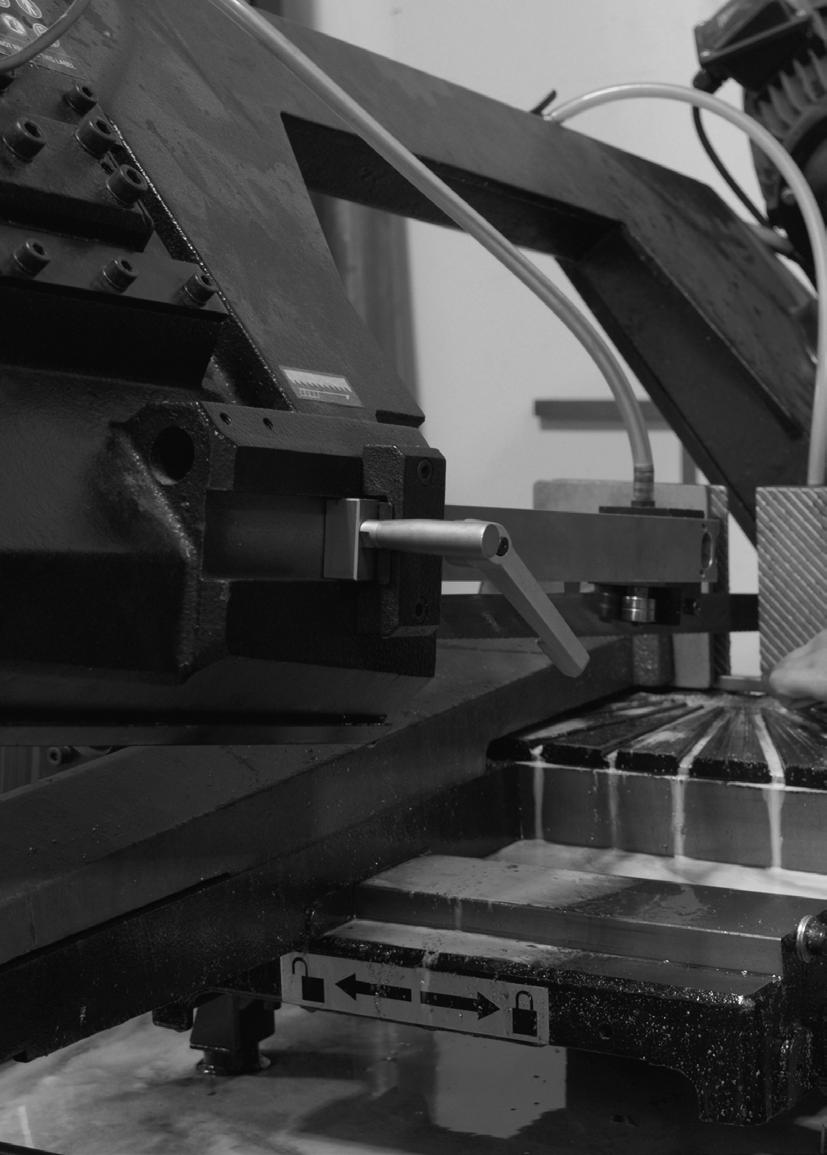
7 minute read
JACK LEE
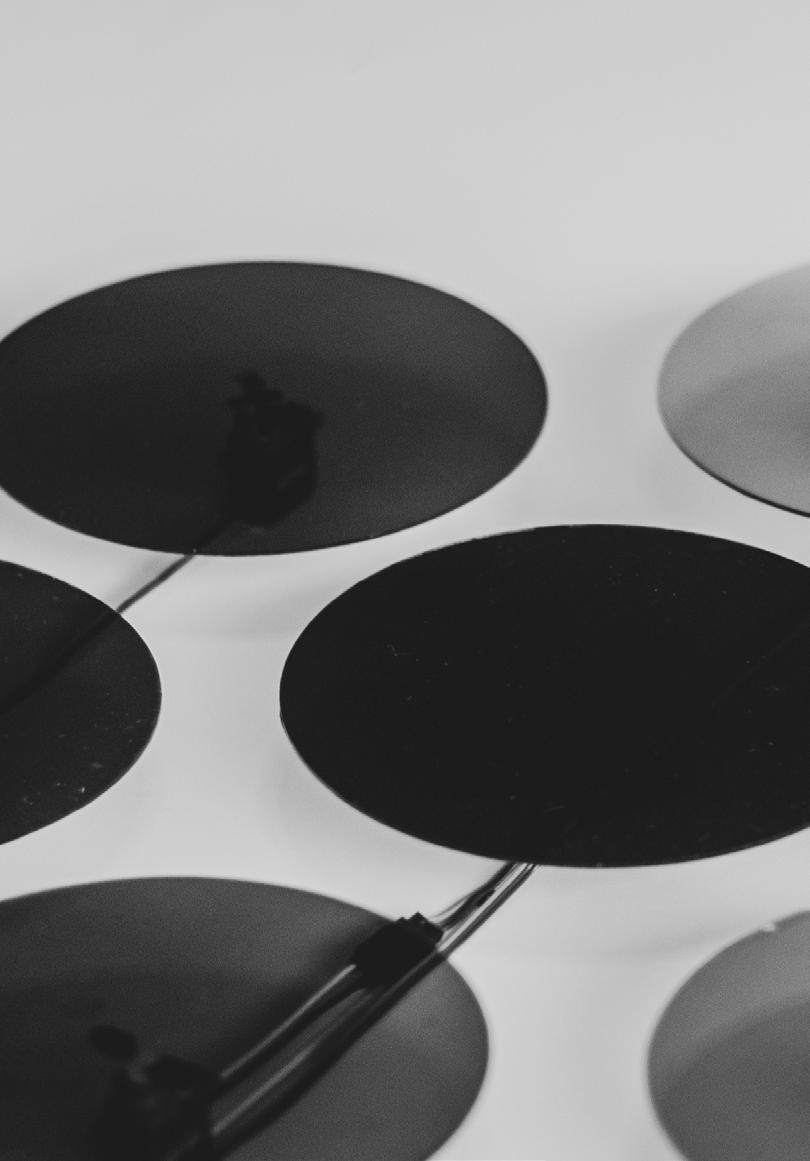
JACK LEE
JACK LEE, A MULTI-DISCIPLINARY DESIGNER, DISCUSSES HIS CREATIVE JOURNEY FROM TAIWAN TO THE UK, HIS UNIQUE USE OF polarised film and servo motors, AND THE POTENTIAL FOR CUSTOM DESIGNS IN HIS CAPTIVATING INSTALLATION 'THE DOTS - II'.
ARTIST STATEMENT
Jack Lee, a multi-disciplinary designer and artist from Taiwan, specialises in creating interactive experiences through technology art. Throughout his academic journey, he studied various specialisations at schools from Taipei ( Taiwan ) , Brno ( Czechia ) to London ( UK ) . These diverse experiences helped shape his multidisciplinary background. His areas of expertise include Product Design, Digital Art, and Physical Computing.
Studying MA in Design Products at the RCA, he explores the convergence of art and design, employing his multi-disciplinary knowledge to craft captivating projects. Lee's works engage viewers, provoke contemplation, and foster a deeper connection between art, design and the audience.
ARTWORK STATEMENT
In this art installation, the panels are precisely arranged and guided by servo motors controlled by a microcontroller. The panels' surfaces are coated with a delicate layer of polarised film, the same as the material of a specially designed face shield that the audience wears. As the panels rotate, the relative angle between the polarised film on the panels and the viewer's face shield changes. This change in angle alters the transmission of light through the panels, affecting their transparency. By manipulating the transparency and time difference of each dot, various dynamic effects will be shown. In this edition, more than 20 servos are aligned to form a rectangular display. As the panels gradually rotate, they create dynamic waves that move from side to side. This installation creates a sense of fluidity in the space, serving as a metaphor of the mobility of human activities.

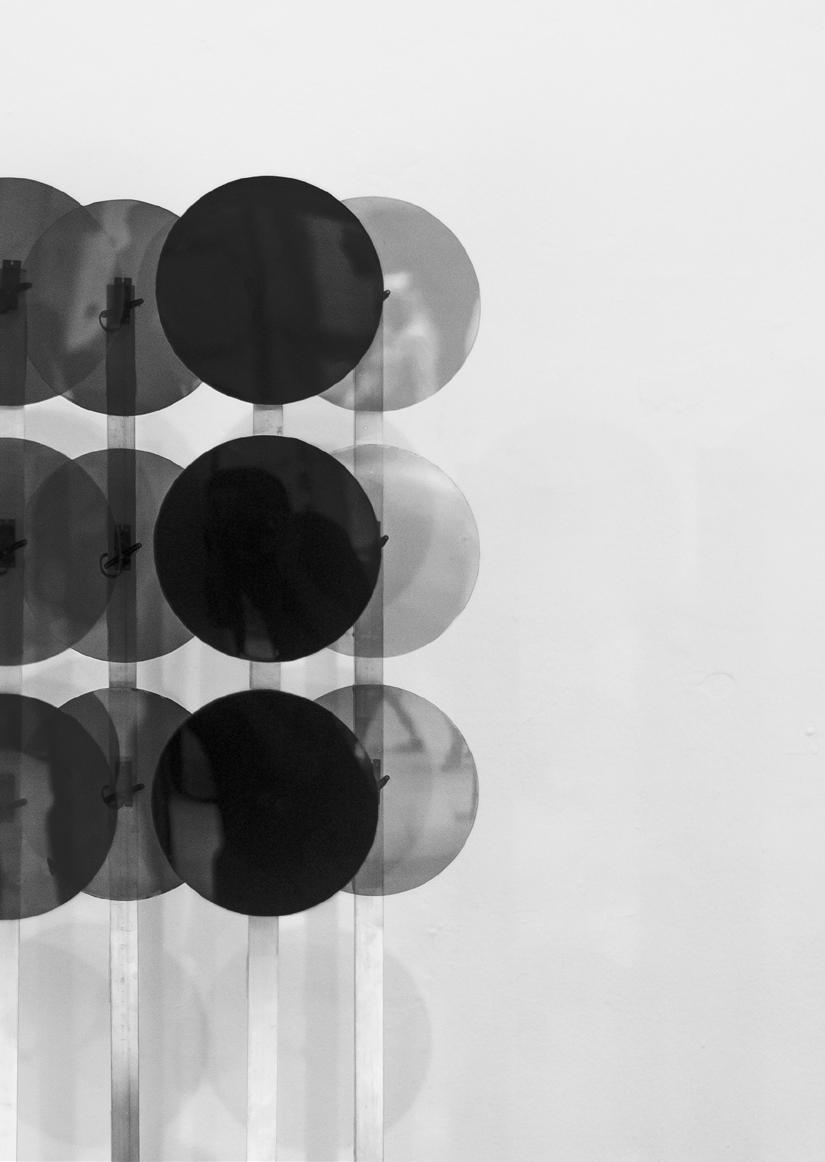
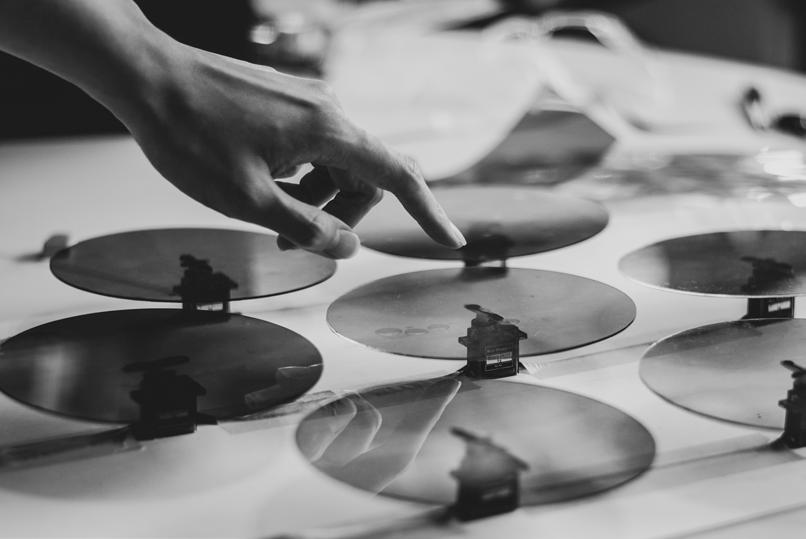
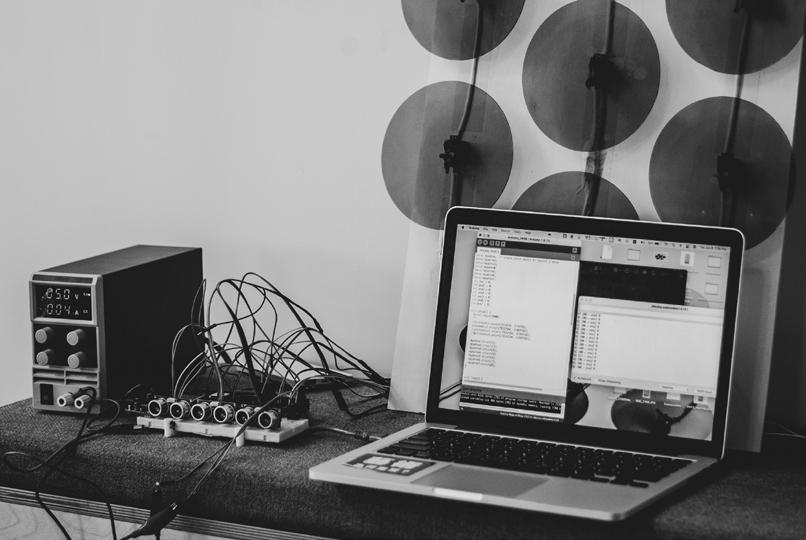
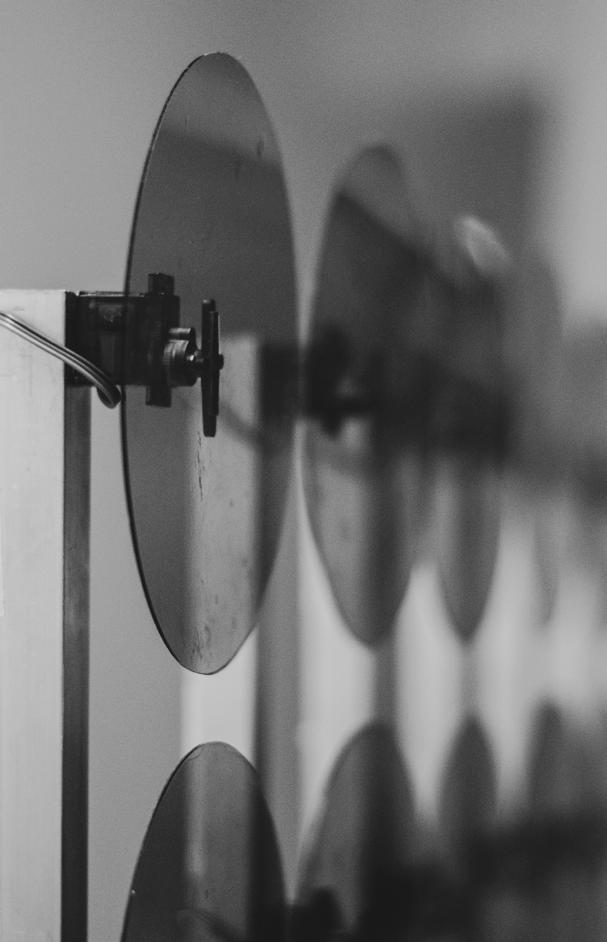
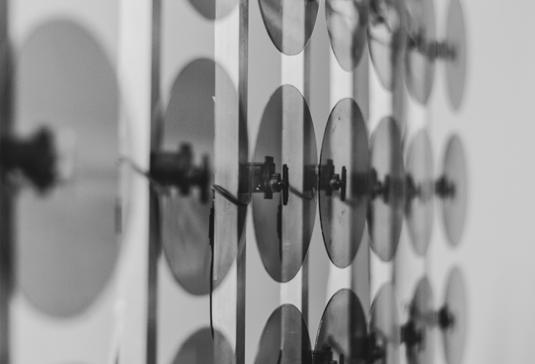
Can you elaborate on how your academic journey, spanning Taipei, Brno, and London, has influenced your multidisciplinary background as a designer and artist?
While studying in the Design Department at the National Taiwan University of Science and Technology, the educational focus was predominantly on fundamental techniques and rigorous design research, which aligned more with traditional industrial design. Back then, I thought industrial design was especially about achieving practical applications and problem-solving, resulting in beautifully crafted design outputs. However, I went to Brno University of Technology ( BUT ) in the Czech Republic during my third year of Bachelor's as an exchange student, where I encountered an entirely different culture and teaching approach.
At Brno, the teaching style was distinct from what I used to in Taipei. Instead of providing clear design objectives, the professors guided us to experiment in areas of personal interest. The design process itself was emphasised over the outcomes.
As I was in the Faculty of Fine Arts in the BUT, I also got exposed to courses on new media art, igniting my interest in technologydriven art. After returning to Taiwan, I incorporated the skills I learned in the Czech Republic into my graduation project, creating an artwork called "SOUNDMATE" that combined technological art with product design. This project sparked my strong interest in integrating products and technology art.
To explore more possibilities in this field, I enrolled in the MA Design Products program at the Royal College of Art(RCA) in the UK, officially embarking on my artistic journey. RCA's teaching methodology encouraged us to unleash creativity, engage in whimsical explorations, and extract intriguing elements for extended design. Throughout this process, I found the direction that genuinely intrigued me - utilising interactive installations to delve into the relationship between human behaviour and the environment ; this subsequently led to the development of The Dots series.
My experiences of living in three different countries significantly broadened my horizons, liberating my creative vision from the confines of traditional design industries. These diverse cultural encounters have enriched the diversity and context of my subsequent creative endeavours.
The manipulation of polarised film and servo motors in your installation creates dynamic effects. Could you critique the impact of these effects on the viewer's experience and perception of the artwork?
I chose polarised film as the crucial material because it can change its transparency through a purely physical rotation. The polarised film can create more intricate and versatile effects than standard colour or light-changing materials. This material is prevalent in our daily lives, but its application in artistic creation has yet to be well-known. Therefore, using such a medium can also bring the audience more curiosity and a sense of surprise. One of the advantages of kinetic installations is its ability to capture the audience's attention at first sight. When they put on the specially designed face shield, they will suddenly reveal unexpected visual effects, which is also a focal point of my intention. The act of putting on the face shield also provides the viewers with a sense of ritual, allowing them to be more focused and immersed in the experiential process. Compared to immediately apparent visual effects, creating surprises through this approach can leave a more profound impression on the viewers.
The use of more than 20 servos to create dynamic waves in the installation is intriguing. Can you discuss the technical and artistic challenges you encountered while designing and executing this aspect of the project?
The Dots II is the second kinetic installation from The Dots series. In the earlier version, I only used seven servo motors. However, in this piece, I've incorporated a staggering 21 servo motors, which has added considerable complexity to the circuitry connections and programming. My background in industrial design allowed me to plan detailed and precise three-dimensional structures and assembly methods in the initial design phase, making me more efficient during the production process. Conversely, as I lacked relevant engineering expertise, I had to rely on self-guided online resources to learn programming and circuit configuration, which dedicated more time to the project. The material characteristics of the polarised film are mesmerising. Different rotation speeds, arrangements, and proportions of overlap yield entirely distinct effects, often deviating from the envisioned outcomes during actual operation. Therefore, iterative testing and design adjustments were necessary, shaping the final product through a trial-and-error process. This piece's eventual arrangement actually differs from my initial design, resulting from an unexpected experiment midway through the setting up of the structure. I always adapt my artwork on-site based on the display space, aiming for better resonance and integration with the surrounding environment; this is also the most intriguing aspect of creating installation art.
You mention being open to custom commissions with variable dimensions. How do you approach the process of creating custom designs, and what kind of collaborations or projects are you particularly excited about?
Due to the simplicity of elements in The Dots series installation, which relies on varying arrangements and dynamic changes of dots to create different visual effects, it can be easily adapted for various application purposes. Each dot can be seen as a module, allowing the quantity and arrangement of units to vary according to client requirements and the space size. Apart from serving as an art installation, The Dots can also be considered a pixelated display, showcasing specific patterns or logos on the surface of architecture. As a result, The Dots holds significant potential for future development in both artistic and commercial applications.

